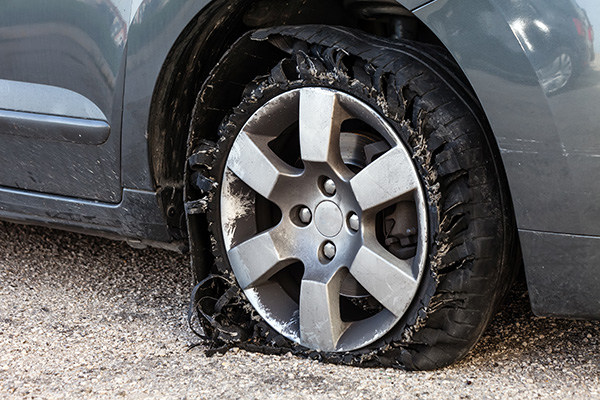
Driving on a flat tire is a predicament no driver wants to find themselves in, yet it's an experience many have faced. A sudden tire deflation can cause immediate panic, but understanding how to handle the situation can make all the difference. So, how far can you safely drive on a flat tire? The answer isn't straightforward, but there are critical factors and steps to consider to ensure your safety and minimize damage to your vehicle.
The Immediate Dangers of Driving on a Flat Tire
Driving on a flat tire is inherently risky. A flat tire can drastically affect your car's handling, making steering difficult and braking less effective. The tire itself can shred, causing potential damage to the wheel, brake lines, suspension, and even the car's body. More importantly, driving on a flat tire increases the risk of an accident, especially at higher speeds.
Tire Deflation
Tire deflation can result from several causes, including punctures from sharp objects, sudden impacts from potholes, or even gradual leaks due to a faulty valve stem. Regardless of the cause, once a tire loses air pressure, its ability to support the vehicle's weight and provide traction diminishes significantly. Driving on a flat tire can lead to the rim cutting into the tire, causing irreparable damage and potential blowouts.
How Far Is Too Far? Assessing the Situation
The general rule of thumb is to drive as short a distance as possible on a flat tire—just enough to get to a safe location. Ideally, you should pull over to a safe spot as soon as you notice the flat. If you must drive on it, keep your speed under 20 mph to reduce the risk of further damage. Driving more than a mile or two on a flat tire, even at low speeds, can cause significant damage to the tire and the wheel.
Using a Spare or Run-Flat Tire
If your vehicle is equipped with a spare tire, it's advisable to change the flat tire immediately. Modern cars often come with run-flat tires designed to be driven on for a limited distance (usually around 50 miles) at reduced speeds (typically up to 50 mph). These tires have reinforced sidewalls that allow them to support the vehicle's weight even when deflated, giving you more flexibility in finding a repair shop.
Preventative Measures to Avoid Flat Tires
Regular maintenance can significantly reduce the chances of experiencing a flat tire. Here are some preventative tips:
- Check Tire Pressure Regularly: Maintaining proper tire pressure not only improves fuel efficiency but also reduces the risk of flats. Use a reliable tire pressure gauge to check all tires, including the spare, at least once a month.
- Inspect Tread Wear: Tires with worn-out treads are more susceptible to punctures. Ensure your tires have adequate tread depth and replace them when they show signs of excessive wear.
- Avoid Road Hazards: Whenever possible, avoid driving over potholes, debris, and other potential hazards that could damage your tires.
- Rotate Tires: Regularly rotating your tires promotes even wear and extends their lifespan, reducing the likelihood of flats.
Need tire maintenance? Schedule an appointment with J & F Motors today. We offer comprehensive tire inspections, rotations, and replacements to keep your car running safely.